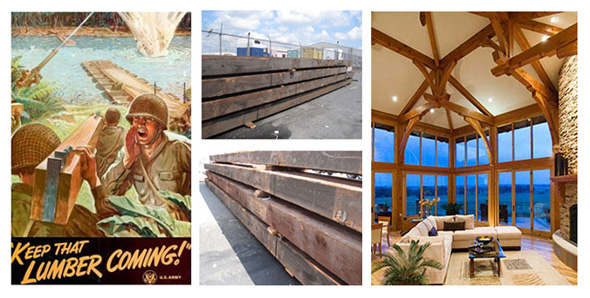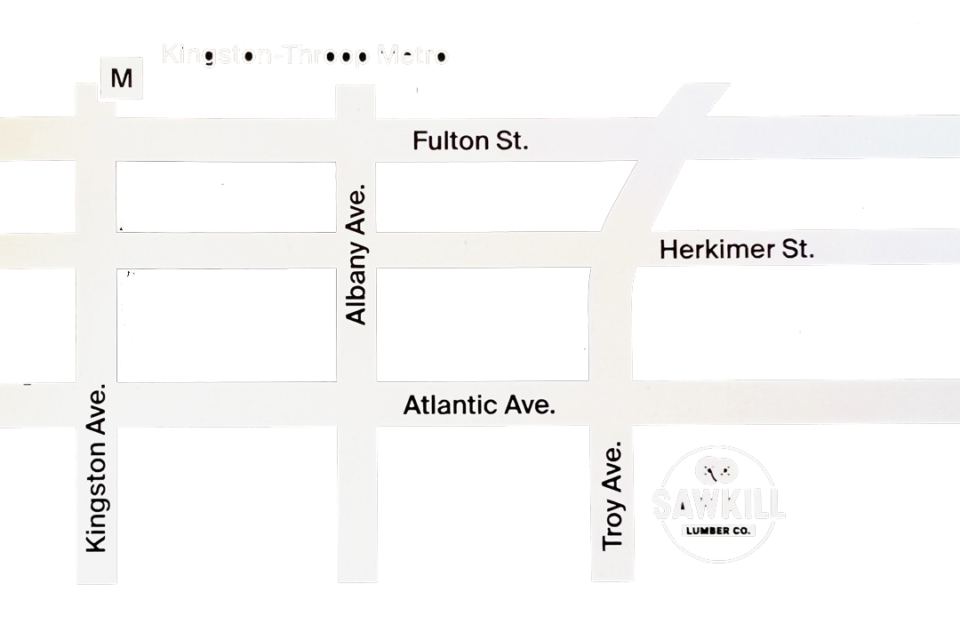 Log Log is a project of Sawkill Lumber Co. to document the history of reclaimed lumber from dismantled structures in New York City. The scope of the research includes the natural history of common tree species, the logging and lumber industry, and the deconstructed buildings or structures where wood is sourced. Tracking re-uses of the lumber within new building and design applications is also included. The work is conducted by Sawkill Lumber Co. and student interns.
Log Log is a project of Sawkill Lumber Co. to document the history of reclaimed lumber from dismantled structures in New York City. The scope of the research includes the natural history of common tree species, the logging and lumber industry, and the deconstructed buildings or structures where wood is sourced. Tracking re-uses of the lumber within new building and design applications is also included. The work is conducted by Sawkill Lumber Co. and student interns.
Uncategorized
Storied Boards NYC
Storied Boards NYC documents the history of lumber that is salvaged from dismantled structures in the New York City area. The research follows the journey of a log, from it’s evolution as a tree species to a building and design project in the 21st century. The scope of the research involves the natural history and anatomy of the original trees, early American logging and lumber industry, construction techniques, the individual buildings and structures where woods are reclaimed and related areas. Tracking re-uses of the lumber to new building and design projects maintains a living history of the this rich and authentic form of material culture. Research for each of the structures is a work in progress conducted by the research team.
The structures primarily span from the Erie Canal era (1832, 211 Pearl St.) to modern times (NY Public School scaffolding planks c. 2005). Some are rare architectural treasures, others are rarely given a second look – but there wouldn’t be another building like it again. Every stick of lumber has a story to tell – whether about a building (862 Washington Ave., NY), a city neighborhood (1099 Leggett Ave., South Bronx), a structural icon (a Park Ave. rooftop water tank), a person associated with the site (P.S. 17, Henry David Thoreau School), or the timbers and trees themselves – prior to becoming the structural heart woods of a world class city.
49-18 Lefferts Blvd., Queens
215 Pearl St., Manhattan
Demolished: 2007
Wood:Eastern White Pine (Pinus Strobus) / 4 x 12-14″ x 18-20′
History: 1832 Greek Revival commercial warehouse. Pearl Street formed the original border of New Amsterdam, where pearl shells washed in from the sea and were used to pave the road.
The neo-Classical business buildings at 211 Pearl Street (built for the soap maker William Colgate) was a last remnant of the Pearl Street dry goods district of the early 19th century, and a valuable relic of New York and the nations early commercial history.
With the completion of the Erie Canal in 1825, New York City would ‘become like a funnel through which the wealth of the Western World would now have to pass.’ The surge of commerce created a remarkable surge in growth ‘…as the narrow lanes of the old city were transformed into the first district in the world devoted exclusively to commerce.’ Fifty years after the American Revolution, these same Greek Revival styled warehouses began to rise block after block along Pearl St., and by 1835, 70% of the nations trade passed through New York City.
The ‘New Counting-House’ architecture in the Greek revival style was inspired by a number of converging factors; America’s fifty-year Jubilee celebration, a renewed appreciation of democracy’s origins in Greek antiquity, support for Greek independence from Ottoman rule in the 1820′s, as well as the popular trend for ancient Greece in England.
The American historian Paul E. Johnson provides the following Squib History of the Pearl Street mercantile district.
The Pearl Street merchants were not ship owners and importers (Those merchants were on Front Street). Pearl Street bough specialized goods (hardware, wine, finished cloth, and lots of other things) from the saltwater merchants and wholesaled them to storekeepers all over the country. They got their start after the War of 1812, when the British “dumped” cheap imported goods at New York. But they got their biggest boost when the Erie Canal connected them with towns and commercial farms in the huge region drained by the Great Lakes. The canal and the New York market commercialized agriculture in a large part of the northern United States. Wheat and other farm products came over the canal, into New York, and out to national and international markets. The boats going the other way were filled with consumer goods: not just necessities but carpets, wallpaper, upholstered furniture, mirrors, finished cloth for curtains, tablecloths, soap, and napkins, sets of dishes and flatware, and on and on. The farmers and villagers in that region created a unique rural middle-class culture – largely out of tastes and goods that they procured from Pearl Street. Storekeepers from that region made yearly trips to Pearl Street (it became known as an outpost of Ohio) to buy the stuff that was “civilizing” western New York and the Old Northwest – with the result that a huge portion of the profits from northern commercial agriculture stayed in New York City. Thus establishments like that at 211 Pearl Street conducted the trade that linked the commerce of the seaport with the commerce of the American interior. New York didn’t just move goods on the ocean. The city sold a very large portion of what commercializing Americans bought. The combination of overseas commerce and burgeoning domestic trade established New York as the commercial capitol (not just the biggest seaport) of the United States after 1815, and Pearl Street was the center of that trade.
In colonial times, the American patriot tailor Hercules Mulligan lived at 218 Pearl Street. Mulligan specialized in uniforms for high ranking British officers and was a member of the Sons of Liberty during the British occupation. He was said to have saved the life of General Washington on two occassions. A very young Alexander Hamilton also boarded with the Mulligan Family while attending Kings College.
By 1920, the once “Famous Old District” became known as ‘The Swamp’. New York School artists Robert Rauschenberg and Jasper Johns occupied loft space at 278 Pearl Street in the early 1950′s.
[/column]
111 West 44th St., Manhattan
The Wood Reserves of WWII
 Recycling in the U.S. may have peaked during WWII. Even the nations cigarette wrappers (made of lead) were neatly pressed into piles for re-melting into bullets. Other scrap, especially steel, was in high demand for the war , which resulted in an exchange of steel for timber in some construction. That was the case at Port Newark, NJ, where Sawkill Lumber recently salvaged huge Doug Fir timbers (12 x 12 x 40’ and 12 x 16 x 36’), which framed a c.1942 storage warehouse (stretching three football fields!). Doug Fir has a remarkable strength to weight ratio (the highest ratings of any western softwood – in bending, tension and compression), a warm reddish-brown figure, and is easily milled. And reclaimed, there’s added reason to salute this WWII era veteran, re-enlisted in the fight for sustainability. (photos: WWII poster, Port Newark, NJ, Boulder, CO).
Recycling in the U.S. may have peaked during WWII. Even the nations cigarette wrappers (made of lead) were neatly pressed into piles for re-melting into bullets. Other scrap, especially steel, was in high demand for the war , which resulted in an exchange of steel for timber in some construction. That was the case at Port Newark, NJ, where Sawkill Lumber recently salvaged huge Doug Fir timbers (12 x 12 x 40’ and 12 x 16 x 36’), which framed a c.1942 storage warehouse (stretching three football fields!). Doug Fir has a remarkable strength to weight ratio (the highest ratings of any western softwood – in bending, tension and compression), a warm reddish-brown figure, and is easily milled. And reclaimed, there’s added reason to salute this WWII era veteran, re-enlisted in the fight for sustainability. (photos: WWII poster, Port Newark, NJ, Boulder, CO).



